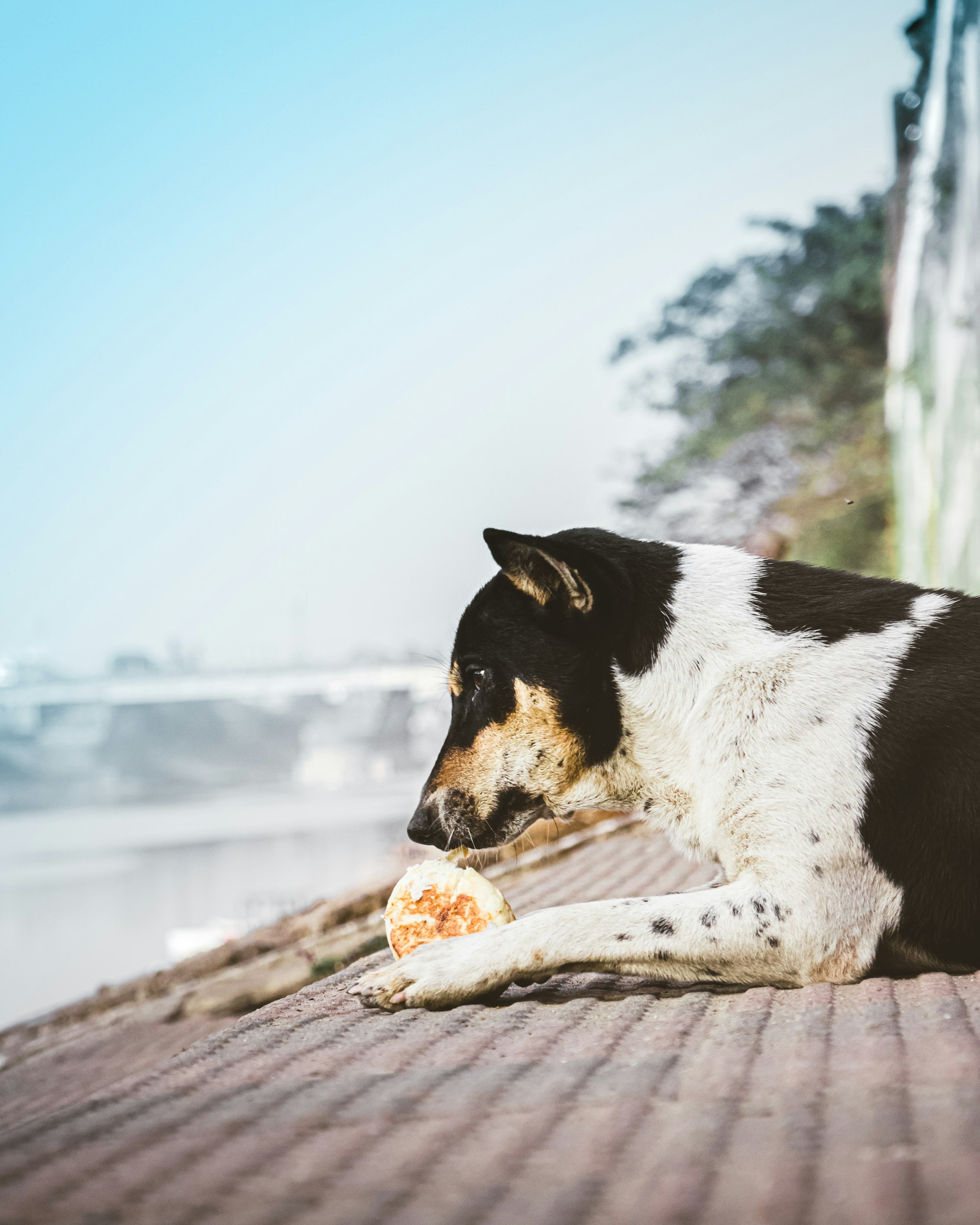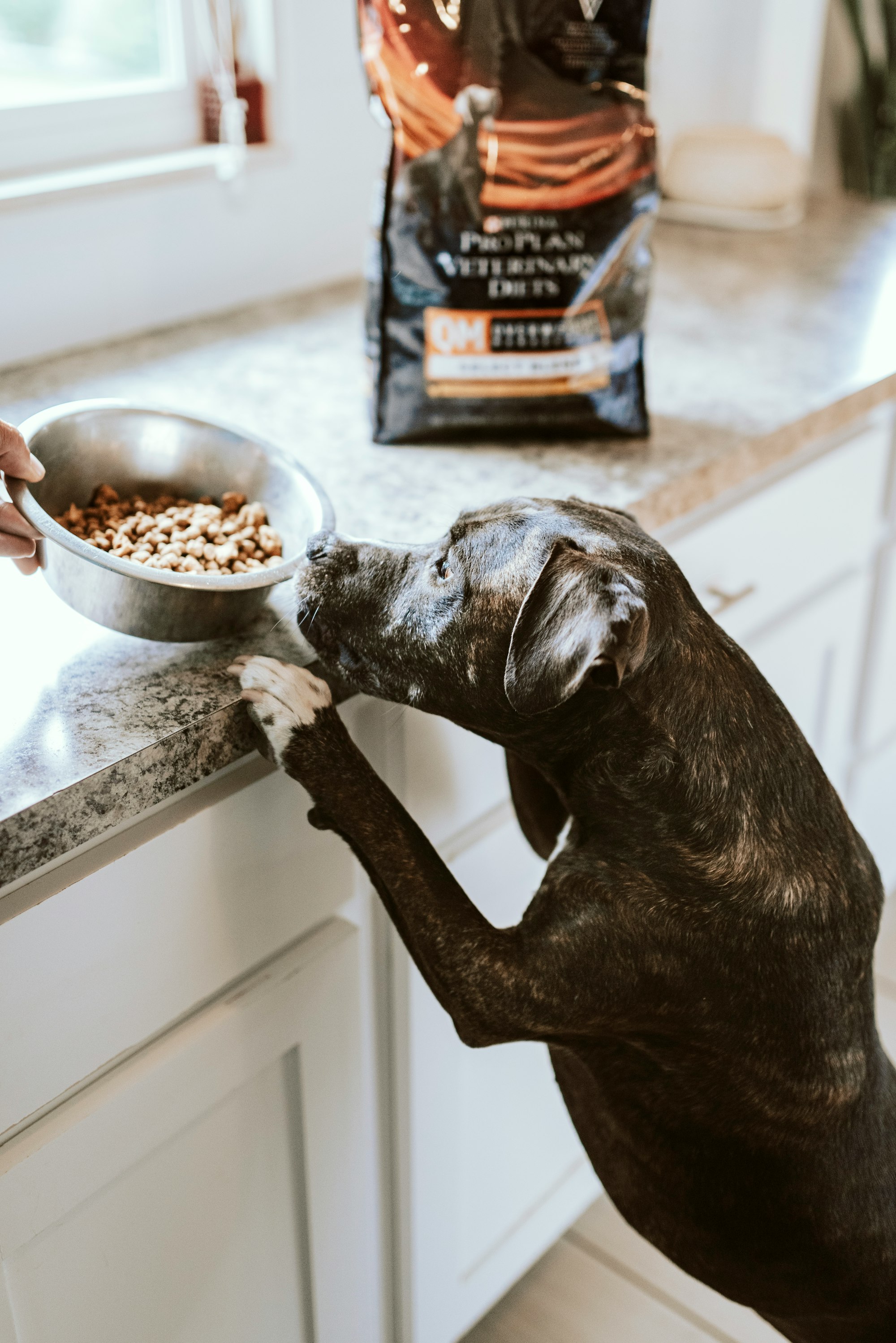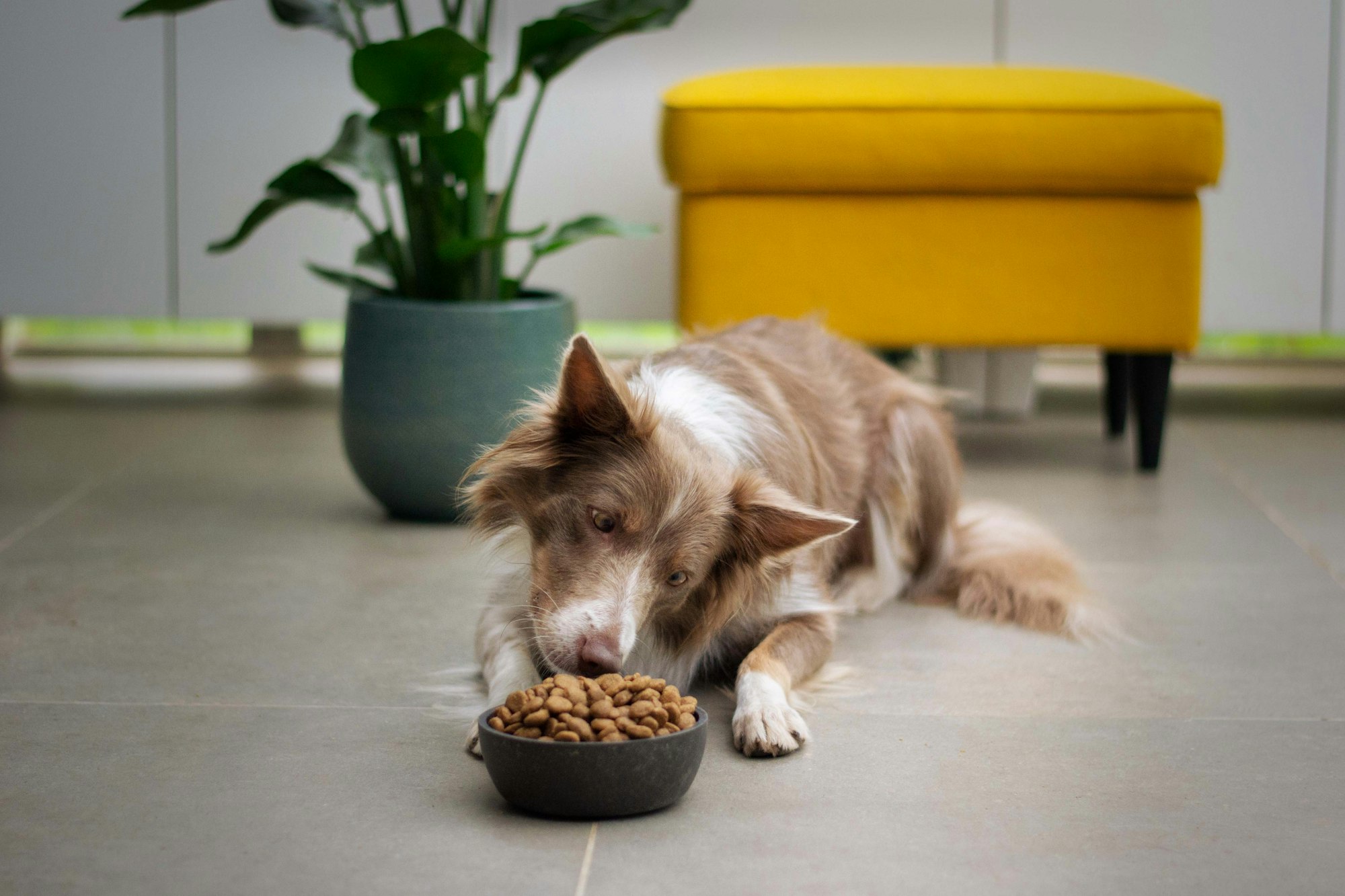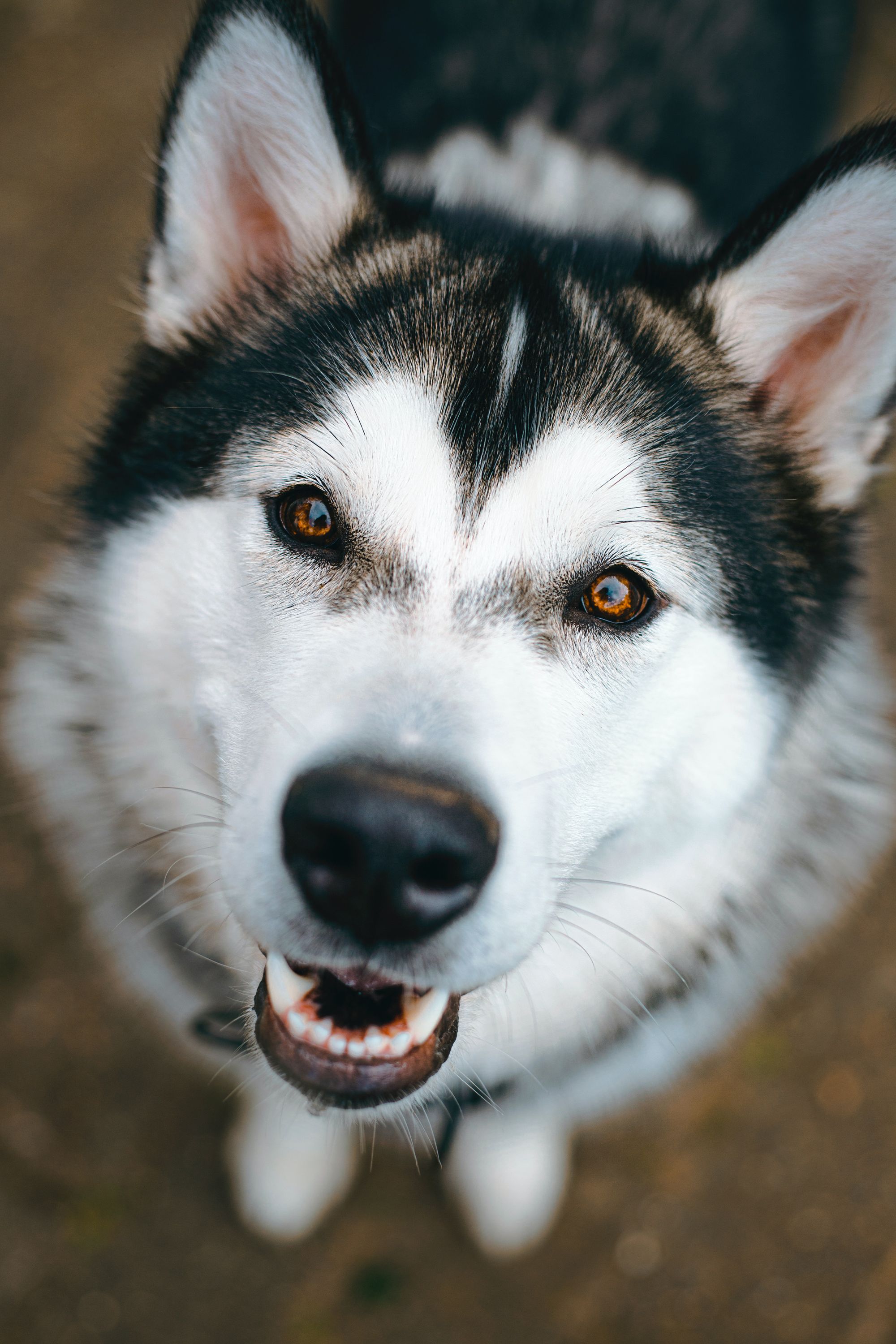The shift from a solely milk-based diet to incorporating solid foods is a crucial stage in a puppy's growth. The introduction of dry kibble necessitates thoughtful planning to promote their overall health. While hydration is key, the appropriate age for a puppy to eat dry food without accompanying water differs.
Being knowledgeable about the right timing and adhering to recommended protocols allows you to integrate dry kibble into your puppy's diet, benefiting their development and well-being. Interestingly, just as we ponder questions like Do Dogs Eat Peaches to better understand their nutritional needs, recognizing these feeding milestones is equally important for their growth.
Key takeaway:
- Puppies can start eating dry food when they are weaned off milk: Transitioning from milk to dry food is an important process for puppies to develop their digestive system.
- The effective age for introducing dry food to puppies varies: It depends on factors like breed, size, and overall health, but usually, puppies can start eating dry food between 4 to 6 weeks of age.
- Puppies still need water along with their dry food: Water consumption is essential for puppies to stay hydrated and aid digestion. It is important to ensure they have access to clean water at all times.
When Can Puppies Start Eating Dry Food?
When can adorable little puppies make the switch to eating dry food? Let's find out in this section as we explore the transitioning process from milk to dry food and discover the optimal age for introducing them to this new dietary adventure. Prepare yourself for an insightful journey into the world of puppy nutrition!
Transitioning from Milk to Dry Food
Transitioning from milk to dry food is a crucial step in a puppy's development. It is essential to introduce solid food at the right time and in the right way to ensure proper nutrition and digestion.
Here are the steps you can follow to successfully transition your puppy from milk to dry food:
1. Observe signs of readiness: Around 4-6 weeks of age, puppies often start showing interest in their mother's food. They may sniff, lick, or even try to eat solid food on their own.
2. Introduce moistened food: Begin by moistening the dry food with warm water or puppy formula. This helps the puppy chew and swallow the food more easily. Gradually increase the amount of moistened food over a few days.
3. Offer small portions: Start by offering small portions of moistened food multiple times a day. Remember, puppies have smaller stomachs and require more frequent meals compared to adult dogs.
4. Monitor the puppy's response: Observe how the puppy reacts to the solid food. Look for signs of enjoyment, such as wagging tails and enthusiastic eating. If the puppy refuses to eat, you can try different brands or flavors of food.
5. Gradually reduce moisture: As the puppy becomes more comfortable with solid food, decrease the amount of water or formula used to moisten the food. This encourages the puppy to chew and eat dry food.
6. Complete the transition: Once the puppy is happily eating dry food without any moistening, the transition from milk to dry food is considered successful. Don't forget to provide fresh water alongside the dry food at all times.
By following these steps, you can ensure a smooth and successful transition from milk to dry food for your puppy. For specific guidance based on your puppy's breed, size, and individual needs, it is important to consult with a veterinarian.
Effective Age for Introducing Dry Food
The effective age for introducing dry food to puppies varies depending on individual development and needs. Consider readiness for solid food and ability to digest and chew properly. Factors to consider for determining the effective age for introducing dry food include:
- Teeth development: Puppies start getting baby teeth at 3 to 4 weeks and usually have a complete set by 6 to 8 weeks, indicating readiness for solid food.
- Nursing behavior: As puppies grow older, they show less interest in nursing or bottle feeding. They may become curious about exploring and show interest in their mother's or littermates' food, suggesting readiness for solid food.
- Digestive system maturity: Puppies' digestive systems develop gradually. By 4 to 6 weeks, their digestive system can usually handle solid food. Introduce dry food gradually to avoid digestive upset.
Early introduction of solid food has been linked to reduced risk of health issues like hypoglycemia and nutritional deficiencies in puppies. Consult with a veterinarian to determine the best age to start introducing dry food based on your puppy's specific needs.

The Importance of Water for Puppies
Water is essential for the health and well-being of puppies. It plays a vital role in their development, digestion, and hydration. The Importance of Water for Puppies can be summarized in the following points:
1. Hydration: Due to their smaller size and faster metabolism, puppies require more water than adult dogs. Sufficient water intake helps them stay hydrated and ensures optimal bodily functions.
2. Temperature Regulation: Puppies have a harder time regulating their body temperature, making them more susceptible to heat exhaustion and dehydration. Water helps them cool down, particularly in hot weather or during intense physical activity.
3. Nutrient Absorption: By aiding in digestion and nutrient absorption, water enables puppies to extract essential vitamins, minerals, and electrolytes necessary for their growth and overall development.
4. Waste Elimination: Sufficient water intake promotes healthy digestion, aiding in waste elimination through urine and feces. This prevents constipation and ensures the proper functioning of the digestive system.
5. Joint and Muscle Health: Water acts as a lubricant for joints and supports muscle flexibility, which is crucial for active puppies. It allows them to participate in physical activities without discomfort or strain.
When Can Puppies Eat Dry Food Without Water?
Curious about when puppies can chow down on dry food without needing any water? Let's dive right into the topic and explore the timing of when puppies can enjoy their dry kibble without thirst-quenching H2O.
We'll take a look at the relationship between water consumption and dry food, as well as factors that influence the right timing. So, if you're wondering when your furry friend can ditch the water bowl during mealtime, read on to find out!
Water Consumption along with Dry Food
To understand the importance of water consumption along with dry food for puppies, refer to the table below:
| Puppy Age | Dry Food Quantity | Water Consumption |
|---|---|---|
| 1-3 months | 1/3 to 1/2 cup | 1/2 to 1 cup |
| 4-6 months | 1/2 to 1 cup | 1 to 2 cups |
| 7-12 months | 1 to 1 1/2 cups | 2 to 3 cups |
During the first 3 months, puppies should consume 1/3 to 1/2 cup of dry food, along with 1/2 to 1 cup of water. As they grow, the food quantity can increase to 1/2 to 1 cup, along with 1 to 2 cups of water between 4 to 6 months. From 7 to 12 months, the dry food quantity can be increased to 1 to 1 1/2 cups, along with 2 to 3 cups of water.
Water consumption is essential for puppies to maintain hydration, aid digestion, and regulate body temperature. It is crucial to ensure puppies have access to clean and fresh water at all times, especially when consuming dry food. Water helps soften the kibble, making it easier to chew and digest. It prevents dehydration and helps maintain overall health and well-being.
Remember, water should be provided separately from the dry food to allow puppies to drink as needed. Monitoring water intake is crucial to ensure they are adequately hydrated. If a puppy shows signs of dehydration, such as dry gums, lethargy, or decreased urination, immediate veterinary attention may be required.
Water consumption, paired with dry food, is crucial for the health of puppies. Ensuring access to clean water not only keeps your pup hydrated but also supports the well-being of delicate areas like their dog paws. Making sure they stay nourished and protected is key.
Factors Influencing the Timing
Puppies can start eating dry food without water when certain factors are considered. The timing of this transition depends on several factors that play a role in influencing when puppies can eat dry food without water. These factors include age, teeth development, chewing ability, appetite and interest, and veterinary guidance.
Generally, puppies can start eating dry food without water around 3 to 4 weeks old. Smaller or toy breeds may require more time before they are ready for this transition. It is important for puppies to have fully developed baby teeth to effectively chew and digest dry food. They must also develop the necessary chewing skills to break down the food properly and avoid choking hazards.
Ensuring puppies exhibit a healthy appetite for solid foods and a curiosity for dry kibble is key before its gradual introduction. Observing their response and preference towards dry food becomes paramount. Furthermore, alongside considering factors like a dewormer for dogs, consulting a veterinarian is vital. They can accurately gauge the optimal time for your unique puppy and offer specialized guidance on transitioning to dry food, possibly without the addition of water.
By considering these factors and consulting with a veterinarian, you can ensure a smooth transition for your puppy from a liquid diet to dry food without water. Ensuring proper nutrition during this stage is crucial for the rapid growth and well-being of your puppy.
Tips for Introducing Dry Food to Puppies
Transitioning puppies to dry food can be a thrilling yet challenging task for pet owners. In this section, we'll unravel essential tips that can make the introduction of dry food to your furry friend a seamless experience. From the gradual transition and mixing methods to choosing the right dry food for puppies, get ready to discover effective techniques that will ensure your puppy's nutritional needs are met while keeping its taste buds satisfied. Buckle up for a rewarding journey into the world of dry food for puppies!
Gradual Transition and Mixing Methods
When transitioning puppies to dry food, it is important to do so gradually in order to avoid digestive issues. By following these gradual transition and mixing methods, you can help your puppy adjust to their new diet without any discomfort or digestive problems.
Here are the steps to follow for a gradual transition:
- Start by mixing a small amount of dry food with their current food in a ratio of 75% dry food to 25% current food.
- Allow your puppy to eat this mixture for a few days to give them time to adjust.
- If there are no signs of digestive upset, you can then increase the amount of dry food to a 50% ratio.
- Monitor your puppy's digestion and adjust the ratio as needed. If you notice any signs of discomfort, slow down the transition.
- After a few more days, increase the ratio to 75% dry food and 25% current food.
- Once your puppy tolerates the dry food well, you can fully transition them to eating only dry food.
- Remember to provide fresh water for your puppy throughout the transition period and beyond.
By following these gradual transition and mixing methods, you can help your puppy smoothly adjust to their new diet and prevent any digestive issues from occurring.
Choosing the Right Dry Food for Puppies
Selecting the appropriate dry food for puppies is crucial for their growth and development. Take into account the following factors when making your decision:
- Nutritional composition: Ensure that the dry food you choose fulfills the specific nutritional requirements of puppies. It should contain top-quality protein, essential fatty acids, vitamins, and minerals to promote their overall health and development.
- Age-appropriate formulas: Puppies have different dietary needs compared to adult dogs. Opt for a dry food formula specifically designed for puppies to ensure they receive the proper nutrients for their growth stages.
- Size-specific formulas: Consider your puppy's size. Some dry food brands offer formulas tailored for small-breed, medium-breed, or large-breed puppies. These formulas are specially formulated to support the development of their bones and muscles.
- No artificial additives: Steer clear of dry food that contains artificial preservatives, colors, or flavors. Choose brands that utilize natural ingredients with minimal additives to maintain your puppy's health and well-being.
- Read customer reviews: Consult online reviews and ratings to gather feedback from other puppy owners. This can provide insights into the taste and overall quality of various dry food brands.
- Consult your veterinarian: Your veterinarian is the best source of advice when it comes to choosing the appropriate dry food for your puppy. They can consider your puppy's specific needs, such as dietary restrictions or health conditions, and recommend suitable options.
By taking these factors into consideration, you can ensure that you make the right choice of dry food for your puppy, providing them with the essential nutrients they need for optimal growth and development.

Monitoring and Ensuring Sufficient Hydration
Make sure your furry friend stays hydrated! In this section, we'll dive into the importance of monitoring and ensuring sufficient hydration for puppies.
Signs of Dehydration in Puppies
It's crucial to recognize signs of dehydration in puppies for their health. Here are some signs to watch out for:
- Lethargy: Dehydrated puppies may seem tired and low in energy.
- Dry mouth and gums: Check for dryness in your puppy's mouth and gums. Sticky or tacky feeling can indicate dehydration.
- Panting: Excessive panting, even when inactive, could be a sign of dehydration.
- Loss of appetite: Dehydration can decrease appetite, so no interest in food or treats might indicate dehydration.
- Sunken eyes: Dehydration can cause the eyes to appear sunken or hollow.
- Poor skin elasticity: Gently pinch the skin on the back of your puppy's neck or between their shoulder blades. If it takes longer than usual to return to its normal position, it may indicate dehydration.
Remember, puppies are more prone to dehydration than adult dogs. Monitor their water intake and provide clean, fresh water at all times. If you suspect dehydration, consult a veterinarian for guidance and care.
Encouraging Water Consumption
Encouraging water consumption in puppies is crucial for their health and well-being. Here are some effective strategies to ensure your puppy stays hydrated:
1. Provide fresh water: Always have a clean and fresh water bowl available for your puppy. Change the water regularly to keep it appealing.
2. Place water bowls strategically: Position water bowls in easily accessible areas throughout your home to encourage frequent drinking.
3. Offer water after meals and playtime: Puppies get thirsty after eating or being active. Give your puppy water after meals and play sessions to promote hydration.
4. Monitor water intake: Keep track of how much water your puppy drinks. A decrease in drinking could indicate illness or dehydration.
5. Add water to food: Boost hydration by adding a small amount of water to your puppy's dry food. This enhances both palatability and water consumption.
6. Use a water fountain: Some puppies are drawn to moving water. Consider using a pet water fountain to entice your puppy to drink more.
Some Facts About When Can Puppies Eat Dry Food Without Water:
✅ Feeding a puppy soft food is important while their teeth develop, but eventually they need to transition to dry food.
✅ The puppy phase lasts about a year for small dogs and 18 months for large breeds.
✅ Puppies go through five weekly growth periods where their food is gradually changed.
✅ During the first 1-3 weeks, puppies should be nursing on their mother's milk or formula.
✅ At 3-6 weeks, puppies can start weaning off milk and onto wet food.

Frequently Asked Questions
When can puppies eat dry food without water?
Puppies can start eating dry food without water at around 6 to 8 weeks of age when their teeth have developed and their digestive systems are mature enough.
What should I consider when choosing the appropriate food for my puppy?
When choosing the appropriate food for your puppy, consider their age and size. Look for AAFCO certification and read the ingredient list to determine the quality of the dog food. It's best to choose foods with meat listed as the first ingredient.
Is it necessary to soak dry food for puppies?
Soaking dry food can help entice puppies to try it and make it easier for them to eat. It's recommended to soak the food for a maximum of 30 minutes and mix it with warm water. Continuously adding water to their food can lead to picky eating habits and fermentation of the food. Gradually transitioning them to dry food without water is preferable.
Why should puppies have access to plenty of water even when they can eat dry food?
Even when puppies can eat non-soggy dry food, it is important to provide them with access to plenty of water. They still need to stay hydrated, and having enough water is crucial for their overall health and well-being.
What are some tips for a smooth dietary change from wet food to dry food for puppies?
Answer: To transition a puppy from wet food to dry food, start by introducing soaked dry food at around 4 weeks of age to help them become independent. Choose puppy-specific diets that offer the necessary nutrients and calories. Gradually reduce the amount of water used to soak the dry food until the puppy can eat non-soaked dry food comfortably.
Are there any special considerations or precautions during the transitional period from wet food to dry food?
Answer: During the transitional period from wet food to dry food, monitor your puppy's individual needs and consult with a veterinarian if you have any concerns. Take note of any tummy issues or changes in appetite, and make adjustments accordingly. Every puppy is unique, and it's essential to ensure they have the best start in life by providing the appropriate diet for their specific needs.
Conclusion:
Introducing dry food to puppies is an important milestone in their growth and nutritional journey. While puppies generally start transitioning from mother's milk or formula around the age of 4 to 6 weeks, it's vital to ensure the kibble is specifically formulated for puppies and is softened with water initially.
Always consult with a veterinarian to determine the best time and approach for your specific breed and puppy's needs. Monitoring their reactions and adjusting portions accordingly can help ensure they receive the vital nutrients needed for a healthy and robust start to life.

